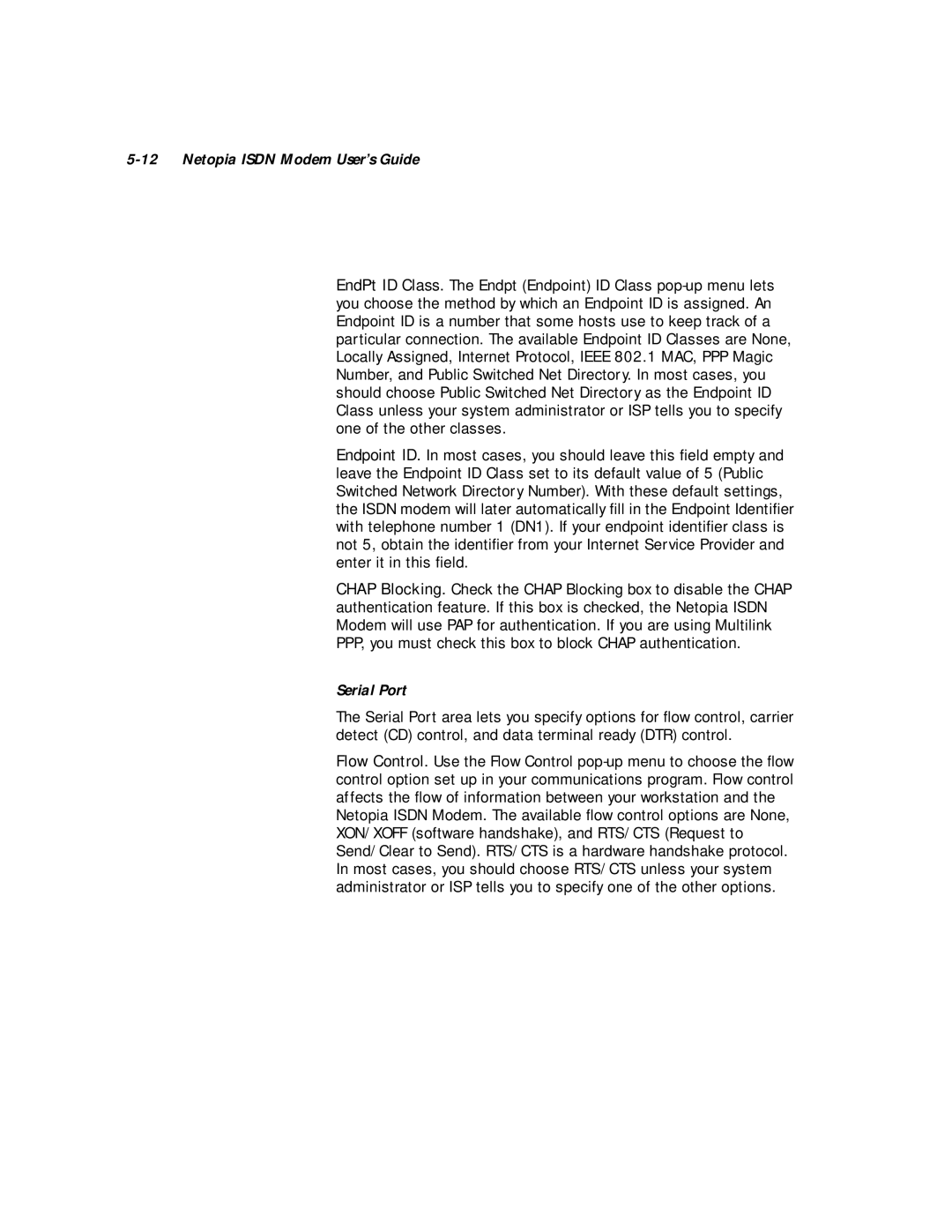5-12 Netopia ISDN Modem User’s Guide
EndPt ID Class. The Endpt (Endpoint) ID Class
Endpoint ID. In most cases, you should leave this field empty and leave the Endpoint ID Class set to its default value of 5 (Public Switched Network Directory Number). With these default settings, the ISDN modem will later automatically fill in the Endpoint Identifier with telephone number 1 (DN1). If your endpoint identifier class is not 5, obtain the identifier from your Internet Service Provider and enter it in this field.
CHAP Blocking. Check the CHAP Blocking box to disable the CHAP authentication feature. If this box is checked, the Netopia ISDN Modem will use PAP for authentication. If you are using Multilink PPP, you must check this box to block CHAP authentication.
Serial Port
The Serial Port area lets you specify options for flow control, carrier detect (CD) control, and data terminal ready (DTR) control.
Flow Control. Use the Flow Control
